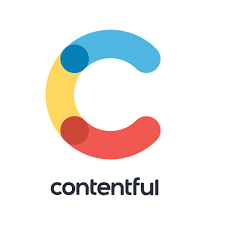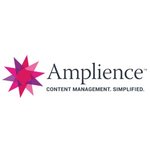Top Headless Cms Softwares
Headless CMS software offers a modern approach to content management that separates the backend content repository from the frontend presentation layer. This setup allows developers to deliver content through APIs to any platform or device. It provides flexibility and adaptability, enabling content to be used across multiple channels, such as websites, mobile apps, or IoT devices. With Headless CM... Read More
36 companies found
Contentful
Product Description
Contentful is a flexible content management system designed for delivering digital experiences across various platforms. Perfect for businesses looking to streamline their content creation and distribution process, Contentful offers an efficient way to manage and organize all digital assets in one place. What sets Contentful apart is its ability to adapt to different needs. Whether you're runnin... Read More
Users
- • No Data
Industries
- • No Data
Market Segment
- • No Data
Bloomreach
Product Description
Bloomreach is a software company that focuses on helping businesses improve their digital experiences for customers. Think of it as a tool that makes your online store or website more appealing and easier to use. With Bloomreach, companies can personalize content, making each visitor's experience unique, and more likely to find what they're looking for. The platform is particularly useful for e-... Read More
Users
- • No Data
Industries
- • No Data
Market Segment
- • No Data
Contentstack
Product Description
Contentstack is a user-friendly platform designed to help businesses manage their digital content efficiently. It’s a content management system (CMS) that makes it easy for teams to create, manage, and publish content across different channels, such as websites, mobile apps, and social media, all from one place. What sets Contentstack apart is its focus on simplicity and collaboration. Users don’... Read More
Users
- • No Data
Industries
- • No Data
Market Segment
- • No Data
Product Description
Storyblok is a content management system (CMS) designed to make content creation and management easy for businesses of all sizes. Unlike traditional CMS platforms, Storyblok offers a more flexible approach, allowing you to manage your content in a way that suits your unique needs. It’s a headless CMS, which essentially means your content can easily be distributed across multiple channels such as w... Read More
Users
- • No Data
Industries
- • No Data
Market Segment
- • No Data
Product Description
Amplience is a cloud-based platform designed to make managing digital content easier and more effective for businesses. It provides tools that simplify the creation, management, and delivery of content across different channels, whether it's a website, mobile app, or social media platform. By using Amplience, businesses can ensure that their content is timely, relevant, and consistent. One of the... Read More
Users
- • No Data
Industries
- • No Data
Market Segment
- • No Data
Product Description
Directus is a software solution that simplifies managing your data. It’s designed for businesses looking to streamline their data management processes without getting bogged down by complex systems or technical jargon. With Directus, you can easily manage, access, and present your data, all from one intuitive platform. Directus stands out because it’s both flexible and user-friendly. Whether you'... Read More
Users
- • No Data
Industries
- • No Data
Market Segment
- • No Data
Product Description
Zesty.io is a cloud-based content management platform designed to help businesses manage and streamline their digital content with ease. Developed to simplify the process of creating, deploying, and managing content across various channels, Zesty.io offers a user-friendly experience that enables teams to work efficiently without getting bogged down in technical details. One of the key benefits of... Read More
Users
- • No Data
Industries
- • No Data
Market Segment
- • No Data
Product Description
dotCMS is a flexible content management system that helps businesses manage all their digital content in one place. If you're looking for a way to handle your website content, blogs, images, and other digital media smoothly, dotCMS is designed to simplify that process. This software caters specifically to the needs of growing companies that want a user-friendly digital platform without a lot of fu... Read More
Users
- • No Data
Industries
- • No Data
Market Segment
- • No Data
Product Description
Hygraph is a content management software designed with the needs of SaaS companies in mind. If you're looking for a way to manage and distribute your digital content efficiently, Hygraph may be exactly what you need. This platform allows you to bring together various content types and deliver them seamlessly to different channels and devices. Whether you’re developing a website, mobile app, or any... Read More
Users
- • No Data
Industries
- • No Data
Market Segment
- • No Data
CrafterCMS
Product Description
CrafterCMS is a modern content management system designed specifically for those who are looking for a user-friendly and flexible platform to manage and deliver digital content. It’s tailored to fit the needs of marketing teams, developers, and business users, making it a suitable option for growing businesses that need to stay agile. At its core, CrafterCMS helps streamline the process of creati... Read More
Users
- • No Data
Industries
- • No Data
Market Segment
- • No Data
What is Headless CMS Software?
Understanding the Basics
Headless CMS software stands apart as a fresh approach to managing content in the digital realm. Unlike traditional Content Management Systems (CMS), which bundle content management with the display or front-end layer, a Headless CMS decouples these two elements. By operating in this decoupled manner, it provides more flexibility and dynamic control over how content gets deployed across various platforms and devices.
Decoupled Architecture
The term "headless" refers primarily to the separation of the "body", which is the backend where content is created and stored, from the "head", which is the front-end where content is ultimately displayed to users. In Headless CMS software, content is stored in a repository and accessed via an API for presentation on any front-end template. This architecture allows developers to build the front-end without being constrained by the backend limitations.
Agile Content Delivery
One of the main advantages of using Headless CMS software is its ability to deliver content swiftly and seamlessly across multiple channels. Whether the end-user interface is on a mobile app, website, IoT device, or even a digital kiosk, the content can be efficiently fetched via APIs, enabling omnichannel delivery. This approach caters to businesses aiming to engage users across diverse platforms comprehensively.
Enhanced Flexibility for Developers
With Headless CMS software, developers gain the freedom to use their preferable technologies to design the front-end. By leveraging various frameworks and libraries, developers are able to craft rich user experiences without being tethered to any particular template or styling constraints intrinsic to the CMS.
Suitable for Modern Digital Needs
In today’s ever-evolving digital landscape, the variety of devices and channels through which users consume content are growing continuously. Organizations seeking to future-proof their digital strategies find Headless CMS software beneficial due to its adaptability and scalability. Regular updates and changes to content styles and delivery methods can be performed without disrupting content creation processes, particularly advantageous for businesses expanding into new markets or platforms.
Content as a Service (CaaS) Model
The operational principle of Headless CMS software aligns with the Content as a Service (CaaS) model. This model emphasizes the delivery of content in a structured format that can be accessed programmatically. This separation and accessibility resonate well in software development environments promoting microservices architecture, ensuring the content management remains streamlined and efficient.
Security and Compliance Considerations
Security is a paramount aspect of employing Headless CMS software. By allowing only API-based content interaction, it minimizes exposure to potential web-based vulnerabilities typical in traditional CMSs. Separating the content management infrastructure from the presentation layer permits better compliance management, as content managers can impose stringent control mechanisms over what and how data is accessed or modified.
Adopting Headless CMS software reflects a forward-thinking approach in content management, aligning with the agile digital transformation needs of modern businesses. By facilitating a flexible, secured, and scalable content strategy, it enables organizations to stay competitive in an increasingly content-driven marketplace.
How does Headless CMS differ from traditional CMS?
Headless CMS software represents a significant shift from traditional content management systems. To understand these differences, it's essential to examine both their architecture and functionality.
Architecture
Traditional CMS platforms integrate front-end and back-end functionality. They store content within a database, then fuse it with a website's design layer through a templating engine. This coupling of content with presentation can often limit the flexibility in how content is delivered and presented across various channels.
Headless CMS software decouples content storage and management from the presentation layer. Instead of managing the front-end design and delivery, it serves as a content repository accessible via APIs. This approach allows front-end developers to fetch content and render it in any format and for any platform, be it websites, mobile apps, or IoT devices.
Flexibility and Scalability
In traditional CMS, content and presentation are intrinsically linked, making it challenging to reuse content across multiple platforms without additional development work or extensions. This can impede scalability as projects grow or expand to new digital avenues.
Headless CMS offers greater flexibility by delivering raw content without embedding presentation elements. This uncoupled nature supports scalability, allowing developers to design and deploy content across diverse platforms and devices without being restricted by a particular front-end technology or structure.
Multichannel and Omnichannel Distribution
Traditional CMS are often optimized for specific types of web pages, which can be limiting for businesses looking to maintain consistency across various digital touchpoints. Extending reach beyond the primary website frequently demands additional investment and tools.
Utilizing Headless CMS software facilitates seamless content delivery across multiple channels. It empowers teams to push content to web, mobile, or even emerging digital interfaces like smart speakers without overhauling the content management process. This multichannel capability is invaluable for maintaining a unified brand presence.
Development and Deployment
Traditional CMS frameworks are often laden with built-in features and WYSIWYG (What You See Is What You Get) editors that cater to users without coding knowledge. While this may be advantageous for non-technical content managers, it could restrict developers who want more control over the digital experience.
Headless CMS takes an API-first approach, offering content as a service that developers can integrate into any front-end framework of their choice. This approach grants developers the flexibility to use modern development practices and tools, fostering innovation and improving performance.
Security and Maintenance
Traditional CMS systems can be more vulnerable to attacks because of their monolithic nature. Regular maintenance and updates are crucial to safeguarding such systems, which can become resource-intensive over time.
By separating content management from content delivery, Headless CMS software can minimize some security risks associated with traditional frameworks. Patch deployments and updates are often streamlined, as developers manage front-end and back-end separately, potentially reducing maintenance overhead.
What are the benefits of using a headless CMS?
Headless CMS software offers several distinct advantages that cater to modern content management needs. By decoupling the content repository (backend) from the presentation layer (frontend), organizations gain flexibility, scalability, and efficiency. Below are the various benefits of using Headless CMS software:
Flexibility in Frontend Development
Headless CMS software allows developers to use any framework or language to present content. This flexibility is invaluable as it enables creative freedom and innovation in design. Unlike traditional Content Management Systems that are usually locked into specific technologies, a headless approach supports diverse development requirements and evolving user experiences.
Cross-Platform Content Delivery
In a digital world, content needs to be accessible across multiple platforms—websites, mobile apps, smartwatches, and more. Headless CMS software excels in delivering content to different endpoints via APIs. This capability means that teams can create content once and publish it across various channels, ensuring consistent messaging and branding.
Enhanced Performance and Speed
Traditional CMS platforms often require the full rendering of a page, which can slow down performance. Conversely, Headless CMS software only delivers raw content, allowing the frontend to load faster. This enhancement in speed not only improves user experience but also boosts SEO performance, which often prioritizes quicker loading times.
Scalability and Agility
Businesses can quickly scale operations using Headless CMS software. Because content delivery is API-driven, adding new platforms or features doesn't demand overhauling the entire system. Organizations can adapt quickly to market changes and user preferences, maintaining a competitive edge.
Security and Control
Headless CMS software offers a more secure environment compared to traditional CMS. With the backend completely separate from the presentation layer, it reduces the risk of attacks. This setup provides developers more control over security measures and data privacy, aligning with stringent compliance standards.
Streamlined Workflows and Team Collaboration
Content teams can work independently from developers, streamlining workflows. With Headless CMS software, teams can focus on creating and managing content without needing to interact directly with the platform's codebase. This separation enhances collaboration, allowing teams to work simultaneously without bottlenecking each other's processes.
Future-Proofing Content Strategy
The digital landscape is dynamic, with technology evolving rapidly. Using Headless CMS software makes adapting to new technologies and platforms easier. Businesses can integrate emerging trends into their content strategy without being tethered to outdated systems.
Centralized Content Management
A headless approach provides a unified content hub. By storing content in a centralized repository and accessing it through APIs, organizations can maintain a single source of truth. This centralization reduces redundancy, ensuring that all platforms are using the latest version of the content.
In summary, Headless CMS software offers a modern, flexible approach to content management that aligns with the needs of a rapidly changing digital environment. By leveraging the advantages of such software, organizations can achieve greater efficiency, streamline operations, and deliver superior user experiences across multiple platforms.
Can Headless CMS Software Improve Website Performance?
Enhanced Loading Speed
Headless CMS software can significantly improve website performance, particularly in terms of loading speed. Unlike traditional content management systems, headless CMS separates the front-end and back-end components. This separation allows developers to create lightweight, optimized websites by using modern front-end frameworks. Consequently, the website's performance is enhanced due to reduced server load and improved content delivery mechanisms.
Optimized Content Delivery
By leveraging API-first architecture, headless CMS software ensures optimized content delivery across various platforms. Content is fetched from the back-end server and delivered to the client-side swiftly through APIs. This decoupling of content management facilitates the use of Content Delivery Networks (CDNs) to cache content closer to end-users. Reduced latency and faster response times are direct outcomes, contributing to improved performance.
Flexibility and Scalability
Headless CMS software provides unmatched flexibility and scalability. Developers can build customized digital experiences without the constraints of predefined templates. This adaptability means that websites can be built to be lightweight and efficient, which leads to faster performance. Additionally, the ability to scale content delivery systems ensures that performance is maintained even during traffic spikes.
Improved SEO Practices
SEO optimization often depends on website performance. With headless CMS software, web developers can integrate progressive rendering techniques to enhance SEO metrics. Fast-loading websites typically achieve better search engine rankings, thus boosting visibility. By using dynamic content fetching and optimized rendering, headless CMS software contributes to improved website performance, indirectly benefiting SEO efforts.
Better Resource Utilization
The architecture of headless CMS software allows for better resource allocation. Traditional CMS systems often require a significant chunk of server resources, impacting performance. In contrast, with a headless CMS, resources are efficiently managed, focusing on critical content delivery processes. This streamlined approach leads to quicker website response times and overall improved performance.
Advanced Technology Stack
Headless CMS software supports the use of the latest technologies and frameworks, such as React, Angular, or Vue.js. These modern front-end technologies are designed to enhance the user experience with fast, interactive, and dynamic web pages. The separation of content management from presentation enables developers to continually update the front-end technologies without disrupting back-end processes, thereby maintaining optimal performance.
Multichannel Content Distribution
In today’s digital age, content is often consumed on various devices and platforms. Headless CMS software efficiently addresses this trend by allowing content to be distributed through multiple channels, such as websites, mobile apps, and IoT devices, without compromising performance. The efficient distribution of content ensures fast loading times across all devices, which amplifies overall website performance.
Enhanced Security Measures
Security layers in headless CMS software contribute indirectly to performance improvements. By minimizing direct interactions between the database and the front end, the potential for security breaches is reduced. This improved security infrastructure ensures that performance issues caused by security threats are minimized, allowing the website to maintain high performance levels consistently.
Headless CMS software uses cutting-edge technology and efficient content delivery methods to significantly improve website performance. By optimizing loading speed, enhancing flexibility, and allowing for multichannel content distribution, websites built on this foundation are more performant, reliable, and responsive.
Is Headless CMS Suitable for All Types of Websites?
Understanding Headless CMS Software
Headless CMS software is a content management system where the frontend is decoupled from the backend. Unlike traditional CMS, which manages both the content and the presentation layer, Headless CMS focuses solely on the backend, providing content through APIs. This flexibility allows developers to deliver content across various platforms and devices seamlessly.
Suitability for Different Types of Websites
Content-Rich Websites
For content-rich websites, such as news portals or blogs that need regular updates and deliver content across multiple channels, Headless CMS software is highly suitable. It allows for content reuse and can automate distribution through APIs, ensuring content is current and accessible on various devices.
E-commerce Platforms
Headless CMS can be particularly beneficial for e-commerce websites. It allows for the integration of various digital experiences and technologies without the constraints typical of traditional CMS setups. By using APIs, online stores can seamlessly integrate complex functionalities, such as payment gateways and product databases, enhancing the shopping experience across platforms such as mobile apps and IoT devices.
Marketing Websites
For marketing-focused websites, Headless CMS offers flexibility and customization. Marketers can create engaging, personalized experiences by integrating with various marketing tools and analytics platforms. This flexibility, along with the ability to deliver responsive content, makes Headless CMS software a great match for marketing sites aiming for high engagement rates.
Corporate and Enterprise Portals
Enterprise portals, which often need to manage vast amounts of data across departments, benefit from the adaptability of Headless CMS software. Its ability to centralize content and distribute it across multiple sites and platforms ensures consistency and accuracy. However, the implementation and integration with existing enterprise systems can be complex and might require skilled development resources.
Situations Where Headless CMS May Not Be Ideal
Smaller Websites or Blogs
For small websites or blogs with limited resources or technical expertise, Headless CMS might not be ideal due to its complexity. Traditional CMS platforms provide ready-to-use templates and themes, making them more accessible for users without technical backgrounds. The development and resource costs associated with setting up and maintaining a Headless CMS can be a limiting factor for smaller projects.
Websites Requiring Basic Content Management
For websites that need only basic content management features without complex integrations or multiple delivery channels, a traditional CMS might suffice. Headless CMS software can be overkill if there's no need for the advanced flexibility and adaptation it offers.
Rapid Development Needs
When a project requires quick deployment, the time and effort needed to implement a Headless CMS could be a drawback. Traditional CMS systems offer faster setup with pre-designed templates and out-of-the-box features, which can be more appropriate for rapid development scenarios.
In summary, Headless CMS software provides considerable advantages in flexibility and multi-platform distribution, making it suitable for various website types with complex needs. However, it may not be the right choice for smaller projects or simple websites that do not require the adaptability and scope offered by a Headless CMS.
How Secure is Headless CMS Software?
Security by Design
Headless CMS software is often designed with security as a paramount consideration. The decoupled architecture inherently improves security by separating the content repository from the delivery layer. This separation reduces exposure of sensitive data and operational layers to potential threats. By not rendering content on the same server delivering the web page, the risk of attacks that rely on server-side vulnerabilities is minimized.
Reduced Attack Surface
In a traditional CMS setup, the entire system, including the front-end and back-end, can be a target for cyber threats. Headless CMS software lowers the attack surface because front-end functionality is divorced from the back-end systems. The front-end, which is simply an API consumer, has few capabilities to manipulate or expose data maliciously on its own.
API Security
Since Headless CMS software functions through APIs, API security becomes a focal point. These systems often incorporate security practices such as HTTPs, API gateways, and token-based authentication like OAuth2.0. Securing the APIs limits unauthorized access and ensures that only verified clients can connect. This controlled access reduces the likelihood of data breaches.
Role-Based Access Control
Headless CMS software commonly employs role-based access control (RBAC), allowing granular management of permissions for users. With RBAC, administrators can restrict who sees or publishes specific pieces of content, effectively minimizing risks from internal threats or negligence. This control limits access based on roles, ensuring that sensitive operations are performed by authorized personnel only.
Regular Monitoring and Updates
Most Headless CMS software solutions regularly update the platform to patch vulnerabilities and adapt to new security standards. Regular monitoring systems fall in place to detect suspicious activities quickly, helping to counter vulnerabilities before they can be exploited. Monitoring ensures that issues are identified and addressed promptly, supporting consistent security maintenance.
Content Delivery Network (CDN) Integration
Many Headless CMS software setups integrate with Content Delivery Networks (CDN), which provide an additional layer of security. CDNs help mitigate Distributed Denial of Service (DDoS) attacks and optimize content delivery by caching. By offloading traffic to a CDN, the headless CMS reduces direct traffic to its servers, decreasing potential attack vectors.
Encryption and Data Protection
Headless CMS software commonly supports data encryption both at rest and in transit. This means that sensitive data is encrypted on the server and while being transferred between systems. Encryption ensures that even if data is intercepted or accessed without permission, it remains unreadable without the decryption keys. Data protection measures help maintain confidentiality and integrity across the system.
Compliance and Certifications
Systems running Headless CMS software often adhere to industry standards and compliance certifications. These can include GDPR for data protection or ISO/IEC certifications for information security management. Compliance ensures legal and regulatory standards are met, which is vital for secure operations.
Conclusion
Headless CMS software incorporates various security measures to keep data secure and restrict access to authorized users only. The architecture and practices enforce enhanced security, reducing vulnerabilities commonly associated with traditional CMS setups.
What should you consider when choosing a headless CMS?
When selecting a Headless CMS software, numerous factors can guide your decision. This type of content management system is distinguished by its ability to manage content independently from the presentation, allowing greater flexibility across various digital platforms. Understanding the key considerations will enable you to make an informed choice.
Content Delivery and Performance
A critical aspect of Headless CMS software is how efficiently it manages content delivery. Look for systems employing robust APIs, ensuring rapid and reliable content delivery to any front-end technology. Evaluate performance by considering the system's scalability, load-handling capacity, and geographic distribution of content delivery networks (CDNs).
Integration Capabilities
Integration is vital for a Headless CMS, as it needs to work seamlessly with your existing technology stack. Verify compatibility with your preferred programming languages, frameworks, and third-party services. Examine the availability of RESTful or GraphQL APIs that enable smooth integration and data interchange between different applications.
Security Features
Security is a significant concern for any CMS. Evaluate the system's capability to safeguard against vulnerabilities. Important security features might include access controls, data encryption, and compliance with industry standards such as GDPR or ISO 27001. User authentication mechanisms should also be robust, ensuring secure access to the content management interface.
Ease of Use and Learning Curve
Although Headless CMS software is lauded for its flexibility, it can present a steep learning curve for those unfamiliar with its architecture. Assess the user interface and consider the learning resources available, such as documentation, tutorials, and community support. A system with intuitive design and ample support materials can ease the transition and adoption process.
Customization and Flexibility
The decoupled nature of Headless CMS software offers substantial customization potential. However, it’s essential to determine how much freedom it provides to customize content models and workflows to suit your organizational processes. Consider the level of control over the content structure and the ability to adjust templates and themes.
Support and Community
A vibrant user community and responsive support channels can be invaluable. Check for active forums, user groups, and official support mechanisms such as live chat, email, or ticket systems. A robust community can offer peer assistance and resource-sharing opportunities, whereas professional support ensures timely resolutions to technical issues.
Pricing and Licensing
Budget considerations are crucial when selecting Headless CMS software. Costs can vary significantly, depending on factors such as user count, storage needs, and API requests. Evaluate different pricing models, such as subscriptions or pay-as-you-go, against your forecasted use scenarios to ensure cost-effectiveness.
Future-Proofing and Updates
Consider ongoing development and update cycles. A Headless CMS software that is regularly updated can provide ongoing improvements and security patches. Investigate the vendor's commitment to technological advancements and their track record in adapting to emerging trends and feedback.
By evaluating these factors, businesses can gain a comprehensive understanding of what to consider when choosing a Headless CMS. This evaluation process is crucial in ensuring that the selected solution aligns with technical, security, and financial requirements.









